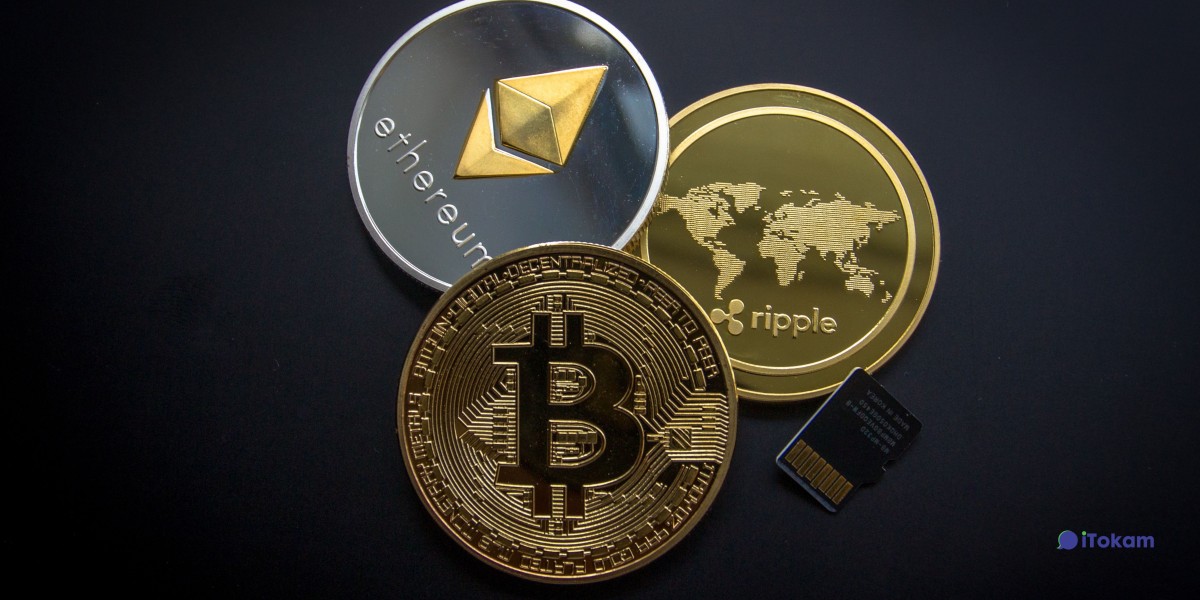Why do people invest in virtual currencies?
Trading cryptocurrencies entails either purchasing and selling the underlying coins on an exchange or betting on the price movements of cryptocurrencies through a Contract for Difference (CFD) trading account.
Cryptocurrency Contracts for Difference
Trading contracts for difference (CFDs) are derivatives that allow you to speculate on cryptocurrency price changes without actually owning any cryptocurrency. To speculate on whether the price of a cryptocurrency will rise or fall, you can "go long" (purchase) or "go short" (sell).
Since they are both leveraged instruments, a relatively small margin deposit is all that's needed to gain complete exposure to the underlying market. Leverage will increase the size of your gains or losses, but always relative to the whole size of your position.
Trading digital currency on an exchange
You buy the coins themselves when you use an exchange to buy cryptocurrency. Buying cryptocurrencies requires opening a position on an exchange, depositing the full asset value, and keeping the tokens in a personal wallet until you're ready to sell.
There is a significant learning curve associated with participating in an exchange, as you will need to familiarize yourself with the necessary technologies and learn to make sense of the data. There are limits to how much money you may put into several exchanges, and keeping an account open can be quite pricey.
Can you explain how cryptocurrency trading works?
The cryptocurrency market is decentralized since cryptocurrencies are neither issued nor guaranteed by any government or other centralized institution. Instead, they traverse a computer network. Nonetheless, cryptocurrency 'exchanges' and 'wallets' allow for the purchase and sale of the currency.
Cryptocurrencies, in contrast to fiat currency, do not exist outside of the blockchain as a digital record of ownership. A digital wallet is where Bitcoin units are stored when they are sent from one user to another. After verification and addition to the blockchain, through a process known as mining, the transaction is declared complete. This is also the typical method for creating new Bitcoin tokens.
Explain the concept of blockchain technology.
Information on a blockchain is a distributed digital ledger. This is the complete record of every exchange made in a cryptocurrency, detailing the history of each coin and the various hands that have held it. Blocks are used to store transaction information in a blockchain, and fresh blocks are appended to the beginning of the chain. Blockchain data is encrypted in ways that standard digital documents aren't.
Broadcast agreement
Blockchain files are distributed throughout a network of computers rather than kept in a central location and are typically accessible to all users of the network. There is no single point of failure that may be exploited by hackers or software flaws, therefore it is both open and extremely difficult to modify.
Cryptography
Cryptography, a combination of advanced math and computer science, is used to secure the connections between blocks. Any attempt to tamper with data breaks the cryptographic ties between blocks, and the computers in the network will quickly catch on to the scam.
Coin mining: what exactly is that?
Mining is the process through which new blocks are added to the blockchain after recent cryptocurrency transactions have been verified.
Verifying financial dealings
To verify that a sender has enough funds in their account, mining computers choose pending transactions from a pool. This is done by comparing the transaction specifics with the blockchain's recorded transaction history. A second verification ensures the sender is the one who authorized the transaction with their private key.
Building a new structure
By solving a complex algorithm, mining computers collect valid transactions into a new block and attempt to create a cryptographic connection to the previous block. A machine updates its copy of the blockchain file and notifies the rest of the network when it has successfully generated the link.
Recommended: OceanFX.io Broker Scam or Authentic?
Why do Bitcoin prices fluctuate?
Supply and demand drive price fluctuations in the cryptocurrency market. In contrast to conventional currencies, however, cryptocurrencies are not subject to the same political and economic influences due to their decentralized nature. There is still a lot of mystery around cryptocurrencies, however, the following can affect their values:
The number of coins in circulation and the pace at which they are created, destroyed, and lost constitute the supply.
Capitalization measures the total worth of all currencies in circulation and how consumers expect this value to change over time.
How and where the press is portraying cryptocurrency, and how much coverage it is receiving
How well cryptocurrency can be used with preexisting systems, such as payment gateways for online stores?
Regulatory changes, data breaches, and economic downturns are all examples of key occurrences.
In what way does cryptocurrency trading function?
CFD accounts from IG allow traders to speculate on the price movement of their preferred cryptocurrency using derivative instruments. You never actually "buy" bitcoin, and instead see prices in fiat currencies like the US dollar.
Because CFDs are leveraged products, you can enter a trade with a deposit that is a small percentage of the total value of the trade. Leveraged goods increase earnings when the market is favorable but also increase losses when it is unfavorable.
When trading cryptocurrencies, what is the spread?
A cryptocurrency's spread is defined as the difference between its purchase and sell prices. Opening a position on the Bitcoin market is similar to opening a position on other financial markets in that you will see two prices. Trading at the buy price, which is above the market price, is required to initiate a long position. Trading at the selling price, which is slightly below the market price, is how you initiate a short position.
What does a lot mean when dealing with cryptocurrencies?
Lots are a common unit of exchange for cryptocurrencies, and they serve to standardize the number of tokens bought and sold. Lots of cryptocurrencies are typically relatively small, with many consisting of a single unit of the basic coin due to its high volatility. Certain digital currencies, however, are traded in larger quantities.
What exactly is cryptocurrency trading leverage?
Leverage allows you to trade substantial volumes of cryptocurrencies without risking your entire investment. Instead, you make a tiny down payment or margin, to secure the loan. Your final gain or loss from a leveraged trade is calculated using the full trade size. You can increase your gains from trade by using leverage, but you can also increase your losses, which could even exceed your margin. Because of the inherent riskiness of leveraged trading, risk management skills are crucial.
Margin in Bitcoin trading: what does it mean?
Margin plays a crucial role in leveraged trading. The capital you put down to initiate and maintain a leveraged position is referred to as the "capital." Keep in mind that your broker and the number of your trades will determine your margin need when trading cryptocurrencies on margin.
The margin on a position is often stated as a percentage. For example, to initiate a position trading bitcoin (BTC), you may need to deposit 10% of the trade's entire value. This means that you can save $4,500 by depositing merely $500.
The definition of a pip in the world of cryptocurrencies.
One-digit percentage points (or "pips") are the standard units for measuring price fluctuations in cryptocurrencies. The majority of cryptocurrency transaction occurs at the 'dollar' level, thus if the price of a cryptocurrency moves from $190.00 to $191.00, for example, it is a one-pip change. Pip values vary depending on the cryptocurrency being exchanged; for some, it's a penny, while for others it's a fraction of a cent.
Before making a trade, it's crucial that you read the fine print on your trading platform of choice and fully grasp the granularity at which price changes will be recorded.
Conclusion
Trading in cryptocurrencies often ends when a buyer or seller closes their position or an order is filled. Depending on the market conditions, a trader may decide to exit a position by taking profits, limiting losses, or waiting for the price to reach a predetermined objective. The transaction is complete and the cryptocurrency is sent to the buyer's wallet after an order is filled.






Tomiwa Oshiariyo 44 w
Now I grab the reasons for the flunctuation of crypto currency.